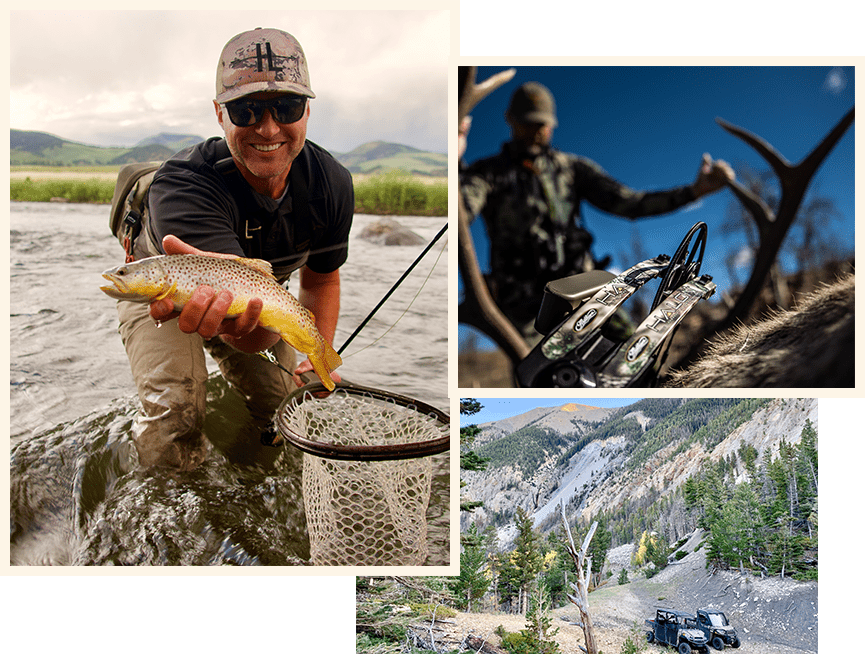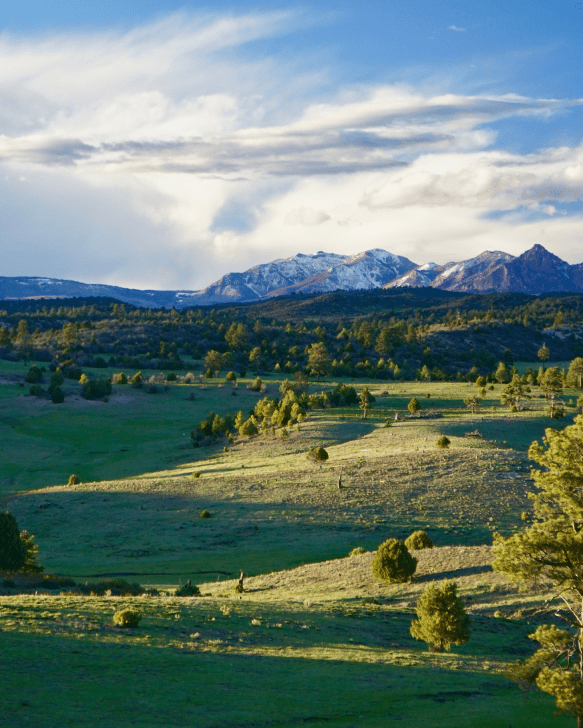Going Deep – Flyfishing property for sale
Football fans are well aware that “going deep” often results in a big play that will turn the game around. Flyfishers sometimes need the big play that can turn their game around, too, one that will transform a fishless day into a sensational one. And “going deep” is often exactly the play that works as spectacularly on the stream as it does on the gridiron.
For the flyfisher, going deep doesn’t mean cranking out a 90-foot cast into the end zone, but effectively getting to the bottom of the stream or river, where most of the insect life lives and often where most of the fish hold. But getting down there and staying down there requires learning a few tricks.
Adding weight to the system is the most common method of getting nymphs and streamers into the deep zones of streams and rivers. In shallower water, a weighted nymph or streamer alone may be sufficient to sink to the magic bottom six inches of the stream. Surely part of the success of beadhead nymphs and streamers is simply because they sink well. Brass beadheads are most common, but to really have your nymph or streamer “drop like a rock,” consider tungsten beadheads, also called “tungheads.” Tungsten has a specific gravity of about 19, compared with lead at about 11 and brass about 9. Thus, tungsten is more than twice as heavy as brass, a significant difference when the fish are holding deep.
One problem with heavily-weighted nymphs and streamers is that they’ll sink too deeply, plummeting right to the stream bottom and sticking there for good. Thus, some anglers keep their flies lightly or moderately weighted and add weight elsewhere instead. Adding lead or tin split shot to the leader several inches above the nymph has become a very popular tactic. (Tin has a specific gravity of only about 7, but is more environmentally friendly than lead, and when you’re fishing with split shot, you’re guaranteed to leave some of it in the stream!) Split shot comes in many sizes, but flyfishers will find tiny #6 Microshot (.11 grams of lead) up to BB shot (.56 grams of lead) of most use. For ease of casting, it’s better to clamp on several smaller shot in a line than fewer, larger shot.
With split shot clamped a few inches above a lighter fly, the shot should occasionally tick the stream bottom, while the fly drifts at a slightly higher level. If you’re not ticking at all, add more shot. If you’re hanging up, remove some! An effective variation on split shot weighting is to add a “ball and chain” to the eye of your fly. To create a ball and chain, tie a 7- to 9-inch piece of monofilament at least a small a diameter as your tippet to the eye of the fly, and a simple overhand knot is tied near the tag end. Add split shot above this knot. This way, the shot hangs on the short piece of mono below the fly, just like like a ball and chain. If you happen to hang up, you’ll probably lose just the shot and not the shot and the fly.
Sinking lines and sinktip lines also sink flies to the bottom, and are usually lead- or tungsten-treated to get the job done. On most rivers in the Rockies, sinktip lines or sinking heads are adequate. Look for sink rates from 4 to 8 inches per second. Sinktip lines are generally better for streamer fishing than nymph fishing, though, because sinktip lines make strike detection much more difficult than standard floating lines and a strike indicator do.
Finally, line control is a simple way to go deep, no matter what weighting system you use. A longer cast allows more time for your streamer or nymph to sink into the target zone where you suspect the fish to be holding. Line control helps, too. Active line mending can keep the line from dragging helps keep your fly down deep, rather than being pulled away by fast water tugging on your line. “High sticking” is another tactic that keeps almost no line on the water, only the leader, and allows flies to sink rapidly at close range.
Sure, we all love the dry fly, but sometimes our buddies the trout don’t. When the trout just aren’t going to come up, go deep. Your gamble might just be the gamewinner you were hoping for.


